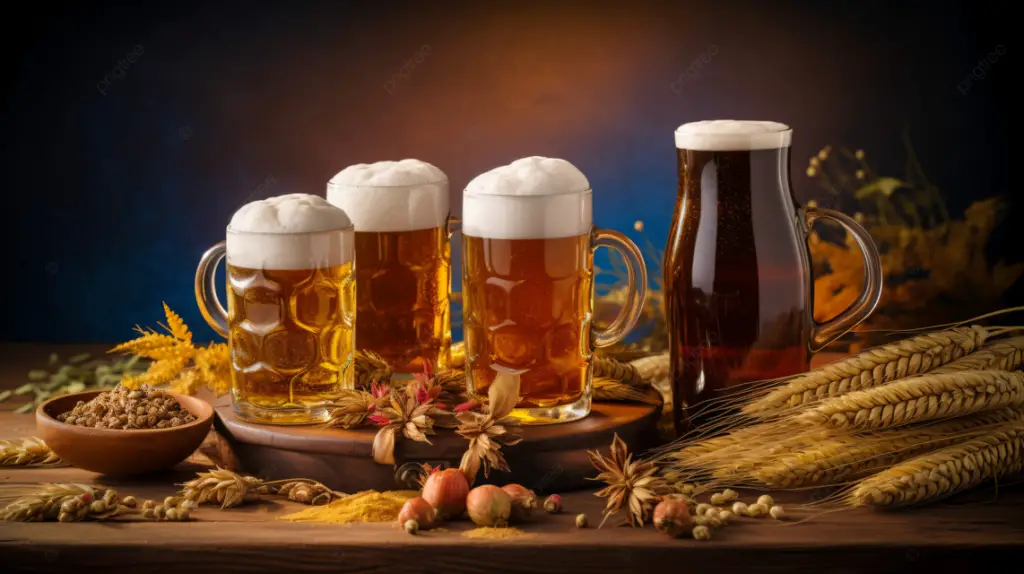India Pale Ale, or IPA, is a beer style that has garnered a global following, becoming a staple among craft beer enthusiasts and breweries alike. Its origins, characteristics, and diverse sub-styles make it a fascinating subject within the beer community. This article delves into what makes an IPA, tracing its historical roots, exploring its taste profile, and highlighting the various types that exist today.
Origins and History
The story of IPA begins in the 18th century, linked to the British Empire’s trade routes to India. Brewers discovered that beers with higher alcohol content and more hops could better withstand the long sea voyage to India, thanks to the preservative qualities of hops. This led to the creation of a beer that was both robust and hoppy, catering to the tastes of British expatriates in India. Though the narrative of IPAs being invented solely for the journey to India is debated, it’s clear that the style was influenced significantly by the trade routes of the time.
Characteristics
IPAs are distinguished primarily by their hop content, which imparts a range of flavors and aromas from floral and citrus to pine and herbal. The alcohol content can vary but is typically higher than many other styles of beer, ranging from about 5.5% to 7.5% ABV, though this can vary widely across different sub-styles. The beer’s color can range from a pale golden to deep amber, depending on the specific style and malts used.
Taste Profile
The defining characteristic of an IPA is its hoppy taste, which brings a bitterness that is balanced by the malt’s sweetness. This bitterness is measured in International Bitterness Units (IBU), with IPAs typically scoring higher on this scale than other styles. The variety of hops used can lead to a wide range of flavors and aromas, from grapefruit and lemon to pine and earthy notes, making each IPA a unique tasting experience.

Types of IPA
Over time, the IPA has evolved into several distinct sub-styles, each with its characteristics:
American IPA: Known for its bold hop flavors, often with a focus on American hop varieties that bring citrus and pine notes.
English IPA: More balanced with a maltier profile and a focus on English hop varieties, leading to a more floral and earthy character.
Double or Imperial IPA: A stronger version with higher alcohol content and more intense hop flavors.
Session IPA: A lighter, more drinkable version with lower alcohol content, yet still maintaining a hop-forward profile.
New England IPA (NEIPA): Characterized by its hazy appearance and juicy, fruity hop flavors without the strong bitterness associated with traditional IPAs.
Milkshake IPA: A newer sub-style that includes lactose for sweetness, often paired with fruit flavors and a creamy texture.
The IPA’s rich history and diverse taste profiles have cemented its place in the hearts of beer lovers worldwide. From its storied origins to the innovative variations crafted by modern brewers, the IPA continues to evolve, offering an endless array of flavors for enthusiasts to explore. Whether you prefer the boldness of an American IPA or the subtlety of an English version, there’s an IPA out there for every palate.
The popularity of IPAs has not only spurred the creation of numerous sub-styles but has also influenced the broader craft beer movement, encouraging experimentation and the push for higher quality and diversity in beer production. This section delves deeper into the cultural impact of IPAs, the brewing process, and the future of this beloved beer style.
Cultural Impact
IPAs have played a pivotal role in the craft beer revolution, serving as a symbol of the movement’s innovation and its break from traditional brewing norms. The style’s flexibility has allowed brewers to experiment with different hop varieties, brewing techniques, and ingredients, leading to a renaissance in beer creativity and craftsmanship. This has not only elevated the status of IPAs but also contributed to a global appreciation for craft beer, with IPAs often being the entry point for many into the wider world of artisanal brewing.
Brewing Process
The brewing of an IPA focuses on showcasing the hop’s potential. This involves a careful selection of hop varieties and the timing of their addition during the brewing process. Hops added early in the boil contribute to the beer’s bitterness, while those added later impart aroma and flavor without significantly increasing bitterness. This technique, known as dry hopping, is especially common in styles like the New England IPA, where the emphasis is on hop aroma and flavor rather than bitterness.
Water chemistry also plays a crucial role in the character of an IPA, with certain mineral profiles enhancing the perception of hop bitterness and flavor. Brewers may adjust their water to mimic the profiles of classic IPA brewing regions or to accentuate certain hop characteristics.
The Future of IPAs
As the craft beer scene continues to evolve, so too does the IPA. Brewers are constantly seeking out new hop varieties, exploring alternative grains, and experimenting with fermentation techniques to create unique and innovative IPAs. The rise of non-traditional ingredients, such as fruits, spices, and even coffee, suggests that the boundaries of what constitutes an IPA are ever-expanding.
Sustainability and local sourcing have also become important trends, with many brewers incorporating locally grown hops and malts into their IPAs. This not only supports local agriculture but also reduces the environmental impact of brewing, offering a more sustainable approach to beer production.
Moreover, the IPA’s global popularity has led to regional interpretations, with brewers around the world putting their local spin on the style. From the use of indigenous ingredients to the adaptation of the IPA to suit local tastes, this global exchange of ideas and flavors is a testament to the style’s versatility and enduring appeal.
The India Pale Ale has journeyed from the holds of 18th-century British ships to the forefront of the craft beer revolution, embodying the spirit of innovation and experimentation that defines the craft beer community. As brewers continue to push the boundaries of what an IPA can be, beer enthusiasts can look forward to discovering new tastes and experiences. The IPA’s story is far from over; it is a style in constant evolution, reflecting the creativity, passion, and diversity of the global craft beer scene.




